VCPs in the Greater Houston Area
Motivation
As the fourth largest city in the US, with more than 7 million people in the surrounding areas, Houston has no reported ambient measurements of the VCP to our knowledge, highlighting the urgent need to update the VCP emission inventory in the Greater Houston Area validated by ambient measurements with detailed spatial and temporal resolution. The recent VCPy emission inventory also shows higher than expected VCP emissions in the Greater Houston Area, further demonstrating the need to use real-world measurements to constrain the uncertainties in model parameterization. In addition, current modeling results sometimes underpredict peak O3 concentrations on high O3 days in Houston. An improved understanding of VCPs in the Houston area may also improve predictions of O3 concentration in the Greater Houston Area, bridging the gap between modeled and measured O3 concentration.
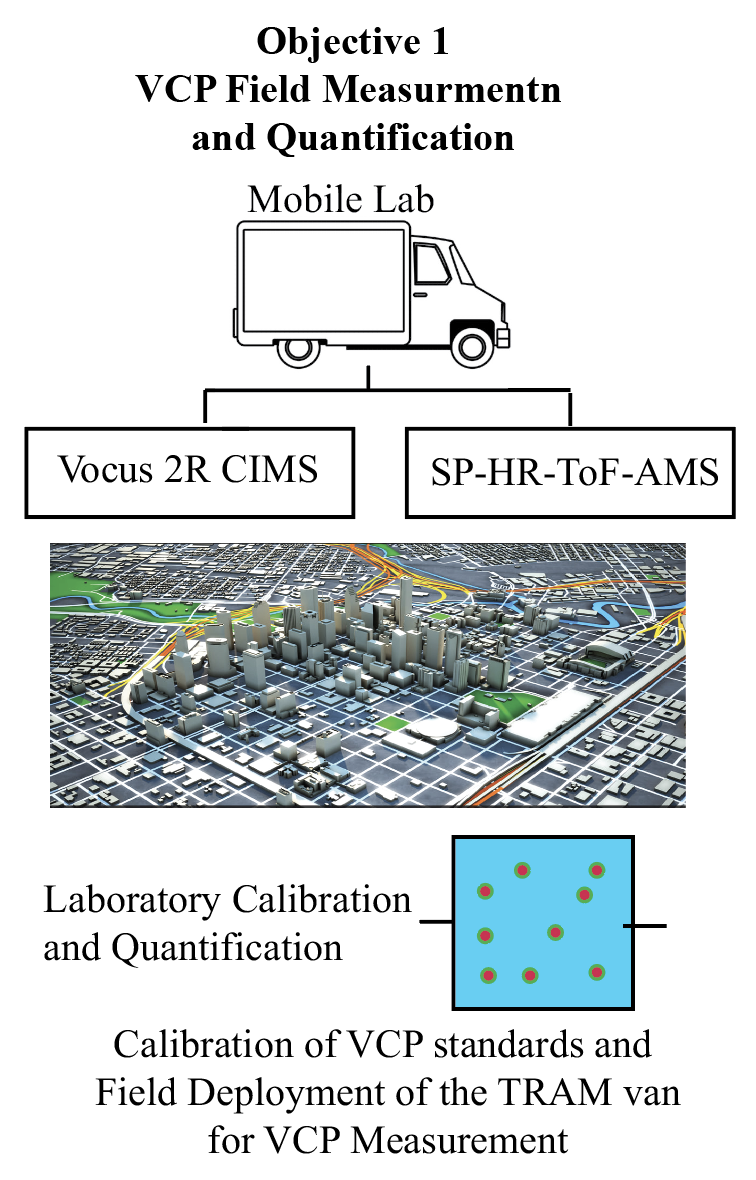
Hypothesis and Goals
PI Zhang's primary hypothesis is that the VCPs in the Greater Houston Area account for a significant portion of the total VOC emission and have important implications on the regional ozone concentrations that were previously not captured by the emission inventory and models. To address this hypothesis, our primary goal is to use existing field measurement data to provide temporal, spatial, and seasonal information of the VCPs in the Greater Houston Area and use a high spatial resolution regional chemical transport model with a detailed photochemical mechanism to further improve the VCP emission inventory and understand the impacts of VCP on air quality, including ozone.

Project Plan and Objectives
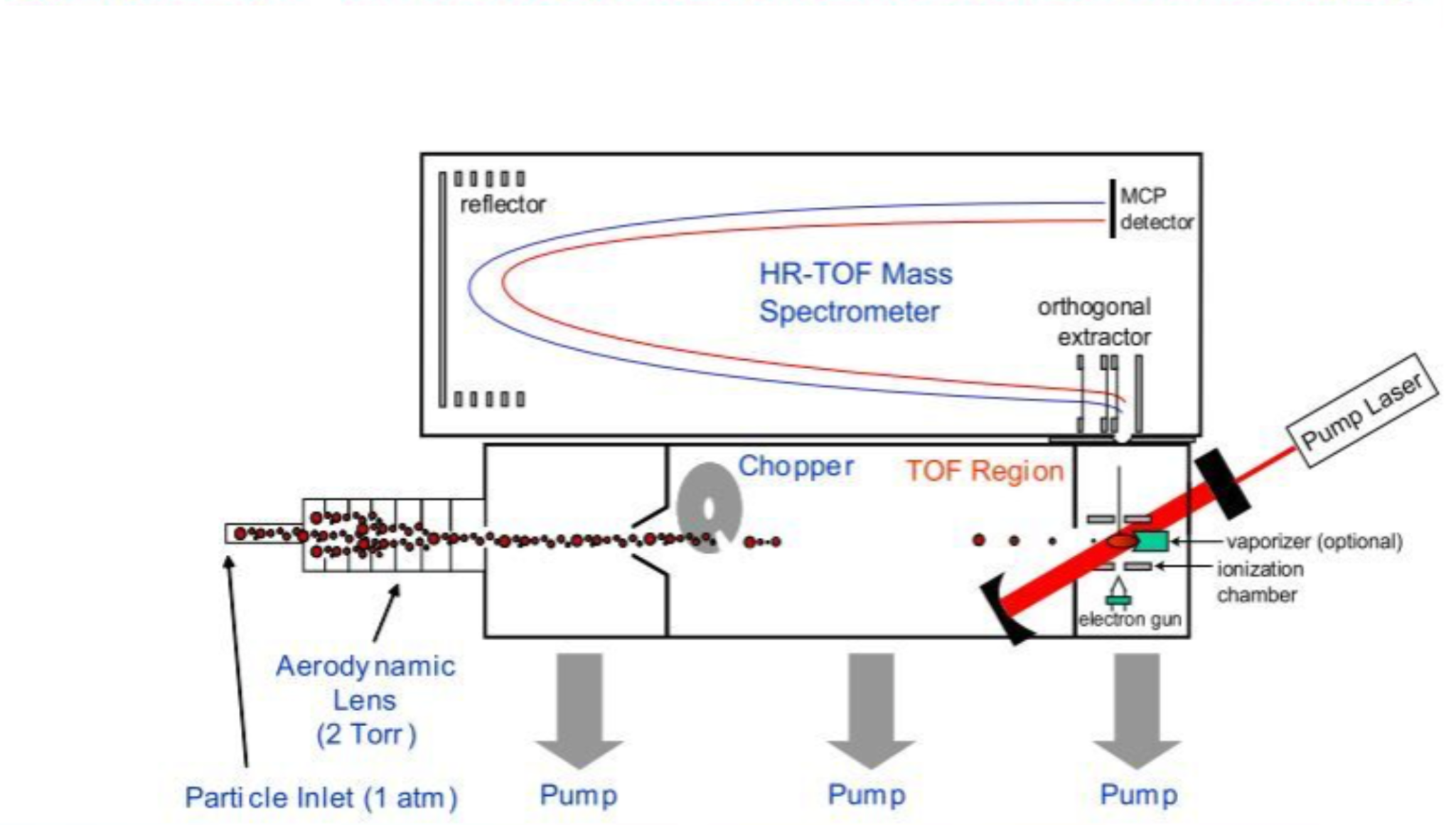
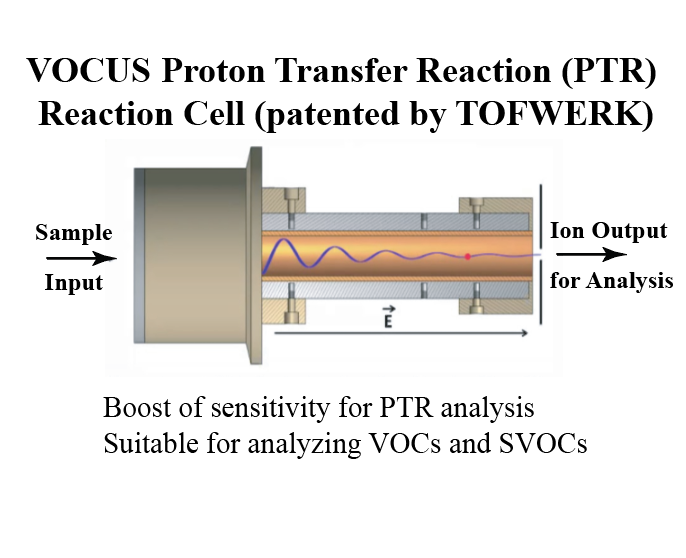
Major Instruments
Objectives
Based on the overarching goal, we identified three major scientific objectives for this proposed research: (1) conduct field measurements of a broad range of VOCs, including oxygenated VOCs and monoterpenes, in the Greater Houston area using the Vocus Chemical Ionization Time-of-Flight Mass Spectrometer (Vocus CI-MS) on a mobile platform; and (2) characterize seasonal difference of VCP concentrations in Houston. We can use the data from objective (1) and (2) to improve understandings of how VCP affect air quality in the Houston, including MDA8 O3.
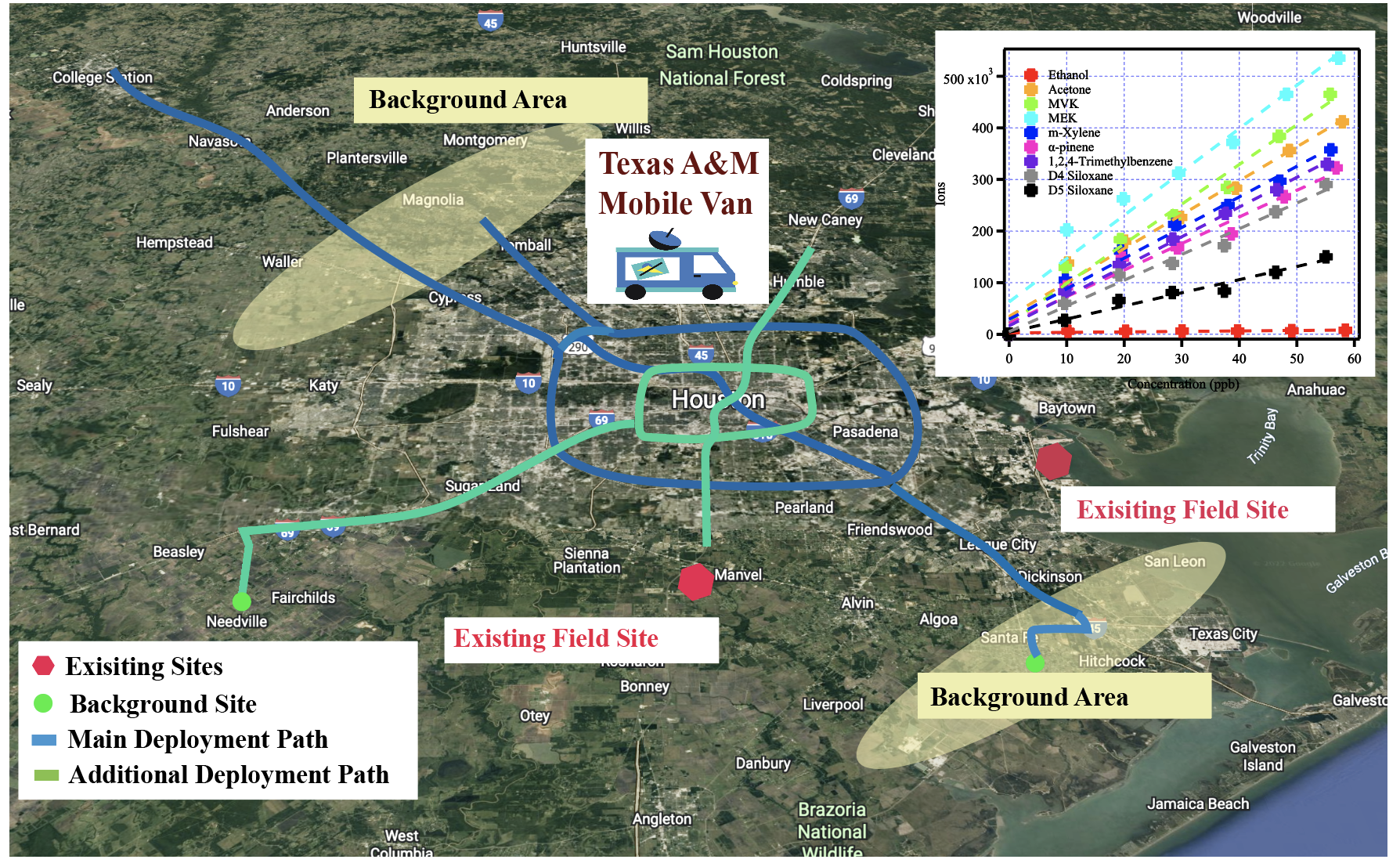
Field deployment map of the Texas A&M Mobile Van. The blue line represents the main deployment route. The green line represents the additional deployment path to further capture VCP emissions. The green solid dots are background sites where there is limited VCP emission compared with urban areas. The van will sample at two background sites for each deployment. Inset is the preliminary calibration data of VCPs using Vocus 2R CI-MS.
Mobile Laboratory Configuration
The Texas A&M Mobile Laboratory is the next generation mobile laboratory that provides service power of the interior instruments using high-capacity lithium-ion batteries. The mobile laboratory has an isokinetic inlet that draws 15 L/min of ambient air into the sampling lines. The mobile laboratory is module-based and allows fast assembly and disassembly of the instruments. Instrumnts inside the Texas A&M Mobile Laboraotry includes one SP-AMS, Vocus 2R CI-MS, carbon monoxide analyzer, ozone analyzer, aethalometer, GPS logger, RH sensor, temperature sensor, and a scanning electrical mobility spectrometer.

Mobile Lab Exterior
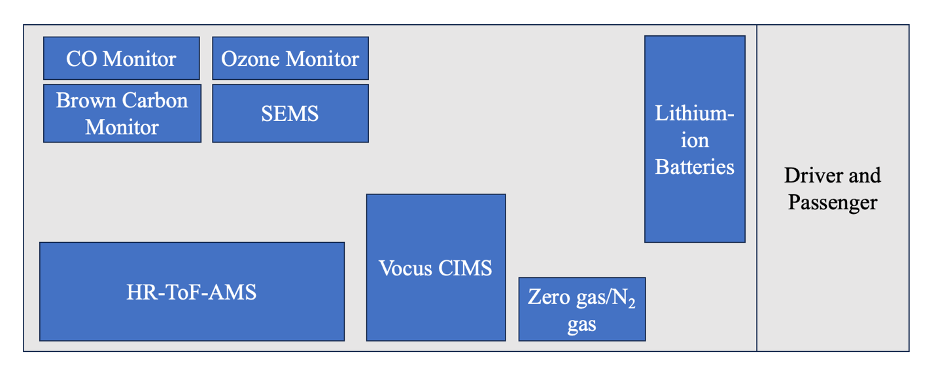
Mobile Lab Interior
